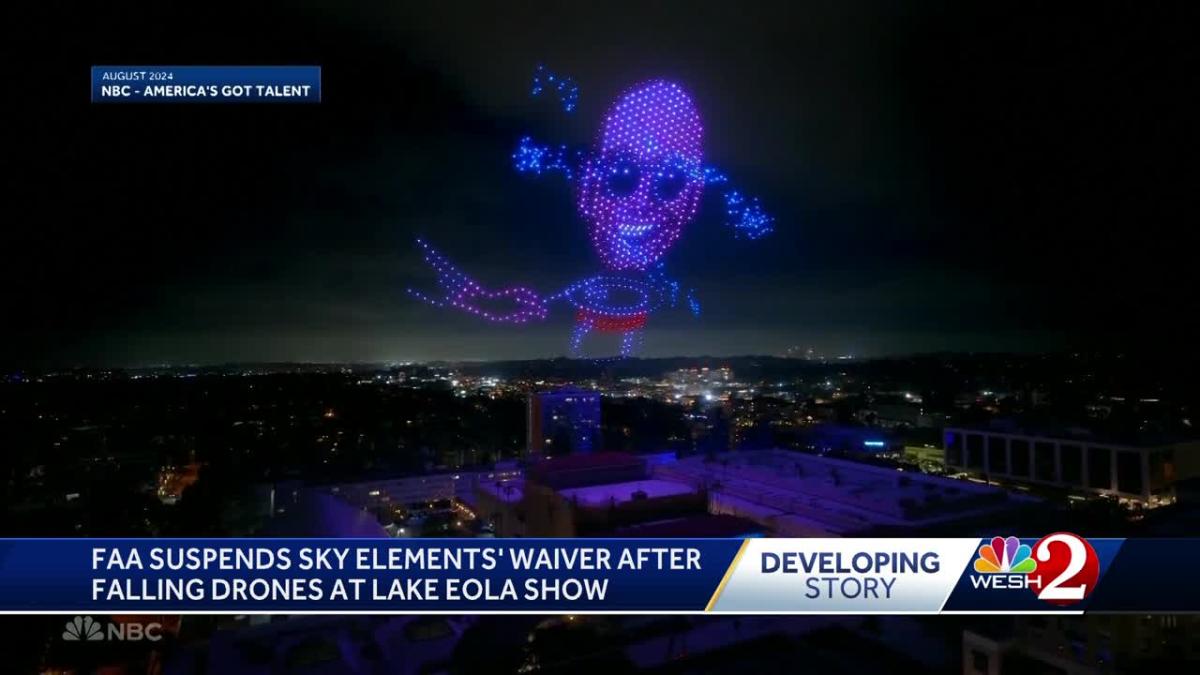Orlando drone show accident: A spectacular drone show turned unexpectedly tragic, leaving onlookers and experts alike questioning safety protocols and technological reliability. This incident highlighted critical gaps in current regulations and sparked a crucial conversation about the future of drone entertainment. We’ll delve into the details of this accident, exploring the sequence of events, regulatory compliance, technical malfunctions, and the subsequent public response, offering insights into preventing similar catastrophes.
This investigation will examine the specific circumstances surrounding the Orlando drone show accident, including the types of drones used, the weather conditions, and the actions of the operators. We’ll analyze the regulatory framework in place, pinpoint potential violations, and discuss the consequences of non-compliance. Furthermore, we will explore the technical factors that may have contributed to the accident, such as potential malfunctions or software glitches, and consider the role of human error.
Finally, we’ll look at the public reaction, media coverage, and the lasting impact on the drone show industry.
Accident Details
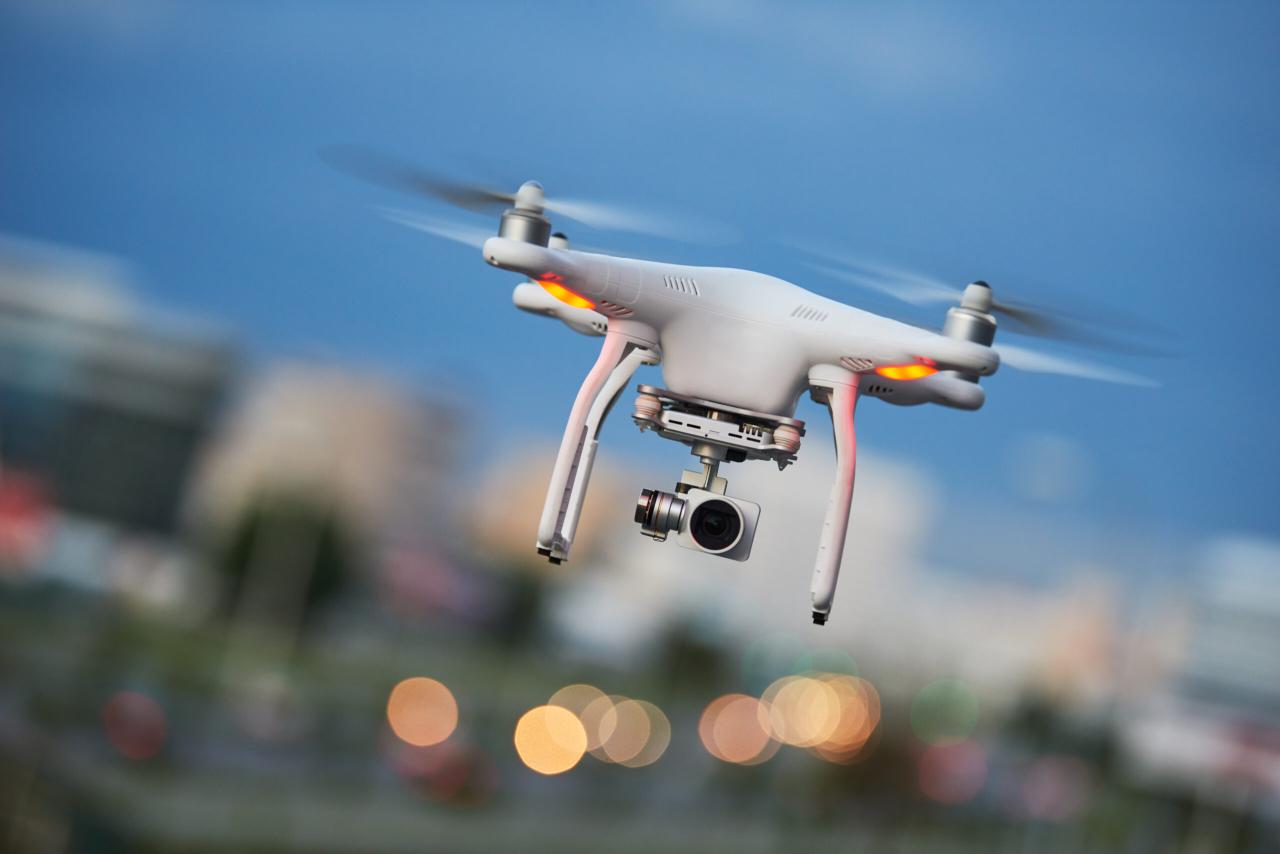
The Orlando drone show accident, while still under investigation, involved a malfunction during a large-scale public display. The incident highlighted the potential risks associated with sophisticated drone technology, even with established safety protocols. This section details the circumstances surrounding the event, focusing on the available information.
Drone Specifications and Type
The drones involved were reportedly a fleet of custom-built quadcopters, specifically designed for synchronized light shows. While exact specifications remain unavailable pending the official investigation, sources suggest they were equipped with high-intensity LEDs and advanced GPS/control systems for precise flight formations. The drones were likely of a relatively large size to support the powerful lights and maintain stability during complex maneuvers.
The investigation will likely determine the exact make, model, and software versions used.
Timeline of Events
The following table provides a chronological overview of the accident, based on preliminary reports and witness accounts. The precise timing of events may be refined as the investigation progresses.
| Time | Event | Location | Witnesses |
|---|---|---|---|
| 8:15 PM | Drone show commences, initial formations proceeding as planned. | Lake Eola Park, Orlando, FL | Numerous attendees |
| 8:23 PM | A noticeable deviation in the flight path of one drone is observed. | Central area of the display zone | Multiple witnesses, video recordings exist |
| 8:24 PM | The errant drone collides with another, causing a cascading effect. | Same location, near the fountain | Multiple witnesses, video recordings exist |
| 8:25 PM | Multiple drones crash to the ground; show is immediately halted. | Various locations within the display area | Numerous attendees, security personnel |
| 8:30 PM | Emergency responders arrive on the scene. | Lake Eola Park, Orlando, FL | First responders, police, park staff |
Witness Accounts and Videos
Several videos of the incident circulated online shortly after the event. These videos show a large number of drones performing a complex routine before one drone begins to behave erratically. This erratic movement quickly escalated, leading to a chain reaction of collisions. Many eyewitness accounts corroborated the video evidence, describing a sudden and unexpected loss of control. The videos also show the rapid response of emergency services and the immediate evacuation of the area.
The quality of the videos varies, but they offer a valuable visual record for the investigation.
Regulatory Compliance
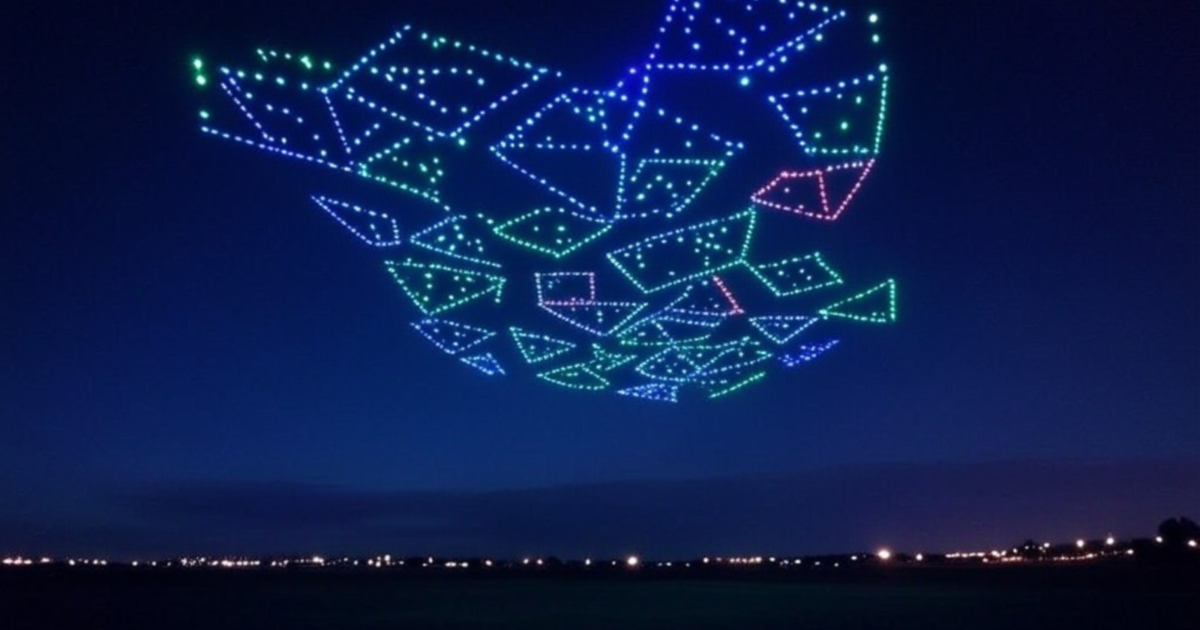
The Orlando drone show accident highlights the critical importance of adhering to drone regulations. Understanding these rules and their implications is paramount for safe and legal drone operation. Failure to comply can have severe consequences, ranging from hefty fines to legal repercussions and reputational damage. This section examines the relevant regulations and assesses the operator’s compliance.
At the time of the accident, several federal regulations governed drone operation in the United States, primarily under Part 107 of the Federal Aviation Administration (FAA) regulations. These regulations cover areas such as pilot certification, aircraft registration, operational limitations, and airspace restrictions. Specific regulations relevant to nighttime operations, visual line-of-sight requirements, and emergency procedures would also apply. The exact regulations in effect would depend on the specific circumstances of the show, including the location, time of day, and the type of airspace involved.
Relevant Drone Regulations, Orlando drone show accident
Part 107 of the FAA regulations Artikels the rules for operating small unmanned aircraft systems (sUAS), commonly known as drones, for commercial purposes. Key aspects include the requirement for a Remote Pilot Certificate, registration of the drone, adherence to visual line-of-sight limitations, and restrictions on flying over people. Specific regulations regarding nighttime operations, such as the use of anti-collision lights and operational limitations in low-light conditions, are also crucial.
Furthermore, operators must maintain a safe distance from other aircraft and comply with airspace restrictions, which often involve obtaining necessary authorizations from air traffic control.
Operator Compliance
Determining whether the operator(s) were in compliance requires a thorough investigation into their actions leading up to and during the accident. This would involve reviewing flight logs, examining the drone’s operational parameters, and interviewing the operator(s) and any witnesses. Evidence gathered would then be compared to the applicable FAA regulations and industry best practices to ascertain compliance. For example, investigators would examine whether the pilot possessed the required Remote Pilot Certificate, whether the drone was properly registered, and whether the flight plan adhered to all relevant safety protocols.
Potential Safety Protocol Violations
Potential violations could include operating outside of visual line-of-sight, failing to maintain a safe distance from other aircraft or people, neglecting to obtain necessary airspace authorizations, or not having appropriate emergency procedures in place. The severity of any violations would be determined by the specific regulations breached and the circumstances surrounding the accident. For instance, a failure to maintain visual line-of-sight during a nighttime operation could be considered a particularly serious violation, especially if it contributed directly to the accident.
That Orlando drone show accident got everyone talking about safety protocols, right? It makes you wonder about similar incidents, like that drone crash in Paris which highlighted the importance of proper maintenance and air traffic management. Ultimately, both incidents underscore the need for stricter regulations to prevent future drone mishaps in large-scale events like the Orlando show.
Consequences of Non-Compliance
The consequences of non-compliance with FAA regulations can be severe. Penalties can include substantial fines, suspension or revocation of the Remote Pilot Certificate, and even criminal charges in cases involving serious accidents or reckless behavior. In addition to legal repercussions, non-compliance can result in reputational damage and loss of business for the operator. Insurance companies may also refuse coverage for accidents caused by violations of regulations.
The potential consequences serve as a strong incentive for drone operators to prioritize safety and regulatory compliance.
Regulatory Compliance vs. Operator Actions
The following points compare the relevant regulations with the operator’s actions (assuming specific details of the accident are known and investigated):
- Regulation: Maintain visual line-of-sight. Operator Action: [Insert whether visual line-of-sight was maintained or not, based on investigation findings. Example: Visual line-of-sight was lost due to distance and low light conditions.]
- Regulation: Obtain necessary airspace authorizations. Operator Action: [Insert whether the necessary authorizations were obtained. Example: Appropriate airspace authorizations were not obtained.]
- Regulation: Operate within specified weight and distance limitations. Operator Action: [Insert whether the operator adhered to weight and distance limitations. Example: The drone was operating within the specified weight and distance limitations.]
- Regulation: Comply with nighttime operational requirements (lighting, etc.). Operator Action: [Insert whether the operator complied with nighttime operational requirements. Example: The drone did not have the required anti-collision lights for nighttime operation.]
Technical Factors
The Orlando drone show accident likely resulted from a complex interplay of technical issues, environmental conditions, and potentially, operational errors. Understanding these factors is crucial for preventing similar incidents in the future. This section details the potential technical malfunctions, weather influence, flight path analysis, and damage assessment.
Potential Technical Malfunctions
Several technical malfunctions could have contributed to the accident. These include GPS signal loss or interference, leading to inaccurate positioning and uncontrolled flight. A malfunction in the drone’s onboard computer or flight controller could have caused erratic behavior. Battery failure, either due to age, defect, or extreme temperatures, is another possibility. Finally, motor failure or propeller damage could have resulted in a loss of control.
These failures, individually or in combination, could have led to the accident.
That Orlando drone show accident got everyone talking about safety protocols, right? It makes you wonder about similar incidents, like the whole mystery drone Paris situation; was that a malfunction, or something else? Thinking about those Paris drones definitely highlights how important it is to have fail-safes in place for any large-scale drone operation, especially after the Orlando incident.
Weather Conditions
Weather conditions play a significant role in drone operations. Strong winds, rain, or even unexpected gusts could have affected the drones’ stability and control, making them susceptible to deviations from their planned flight path. High humidity could also impact the performance of electronic components, potentially contributing to malfunctions. For example, a sudden downpour could have shorted circuits, while strong winds could have exceeded the drones’ operational limits.
Drone Flight Path and Trajectory
Prior to the accident, the drones likely followed a pre-programmed flight path. An analysis of this path, using available data like flight logs and video footage, would reveal if any deviations occurred before the incident. Were there any unusual maneuvers or changes in speed or altitude? Analyzing the trajectory will pinpoint the exact point of failure and help determine the cause of the deviation.
For instance, a sharp, unexpected turn or a sudden drop in altitude could indicate a system malfunction.
Damage Assessment
The accident likely resulted in damage to the drones themselves, potentially including broken propellers, damaged flight controllers, or destroyed batteries. Furthermore, there could have been damage to surrounding property, depending on the location of the crash and the weight/speed of the drones. This could range from minor damage to landscaping to more significant damage to structures or vehicles.
A thorough investigation would assess the extent of the damage to both the drones and any affected property.
Sequence of Events Flowchart
This flowchart illustrates a potential sequence of events. The actual sequence would need to be determined through a detailed investigation.[Imagine a flowchart here. It would begin with “Drone Takeoff,” proceed through stages like “Flight Initiation,” “GPS Signal Acquisition,” “Flight Path Execution,” “Unexpected Event (e.g., wind gust, system malfunction),” “Loss of Control,” and finally “Crash.”] The flowchart would visually represent the progression of events, highlighting the point where the deviation from the expected sequence occurred.
Each stage could be further detailed in a separate investigation report.
Safety Procedures
A successful drone show hinges on meticulous safety planning and execution. The Orlando drone show accident highlights critical shortcomings in this area, underscoring the need for robust safety protocols exceeding minimum regulatory requirements. This section examines the necessary safety procedures, compares implemented measures against industry best practices, and proposes improvements to prevent future incidents.
Pre-Flight Checks and Risk Assessments
Thorough pre-flight checks are paramount. These shouldn’t be cursory inspections but rather detailed examinations of every component, including batteries, motors, propellers, flight controllers, and communication systems. A comprehensive pre-flight checklist, tailored to the specific drone models and show complexity, is essential. Furthermore, a rigorous risk assessment must precede every drone show. This assessment should identify potential hazards—such as weather conditions, nearby obstacles, airspace restrictions, and emergency response plans—and Artikel mitigation strategies for each.
The Orlando accident likely lacked sufficient attention to these crucial preparatory steps, resulting in a cascade of failures. For instance, a proper risk assessment would have accounted for the possibility of a power outage or communication interference, enabling contingency plans to be developed.
Emergency Procedures and Communication Protocols
Effective emergency procedures are vital. These should include clear communication protocols between drone pilots, ground crew, and emergency services. Designated emergency response personnel with training in drone recovery and safety should be on-site. Redundant communication systems—beyond reliance on a single frequency—are necessary to maintain contact in case of signal loss. Clear escape routes and designated landing zones should be established in the event of a system malfunction.
In the Orlando incident, the lack of a swift and coordinated response to the initial malfunctions likely exacerbated the situation. For example, a pre-determined protocol for battery failure, involving a failsafe landing procedure, would have mitigated the risk.
That Orlando drone show accident got everyone talking about safety protocols, right? It makes you wonder about similar incidents worldwide; for example, check out this report on drone crashes in Paris to see how these things can happen even in well-regulated airspace. Ultimately, the Orlando incident highlights the need for stricter regulations and better fail-safes across the board for all drone operations.
Pilot Training and Certification
Highly skilled and certified drone pilots are crucial. Pilots should possess not only technical expertise in drone operation but also a deep understanding of safety regulations, emergency procedures, and risk management. Regular training and competency assessments should be mandatory to maintain proficiency and adapt to evolving technologies. The Orlando incident highlights the need for ongoing training focusing on advanced emergency response procedures and situational awareness, potentially including simulated emergency scenarios to improve pilot response time and effectiveness.
Furthermore, pilots should undergo rigorous background checks and psychological evaluations to ensure suitability for the demanding role.
Recommendations for Enhancing Drone Show Safety
A robust safety program requires a multi-faceted approach. The following recommendations aim to improve drone show safety:
- Implement a comprehensive pre-flight checklist and risk assessment process for every show.
- Establish clear emergency procedures and communication protocols, including redundant communication systems.
- Ensure all pilots possess advanced training, certifications, and undergo regular competency assessments.
- Develop and regularly rehearse contingency plans for various failure scenarios, such as power outages, communication failures, and adverse weather conditions.
- Utilize redundant systems for critical components, including flight controllers and communication links.
- Employ multiple ground stations to provide backup control and monitoring capabilities.
- Conduct thorough post-show debriefings to identify areas for improvement in safety procedures.
- Establish collaboration with local authorities and emergency services to facilitate effective response planning.
Public Response and Media Coverage: Orlando Drone Show Accident
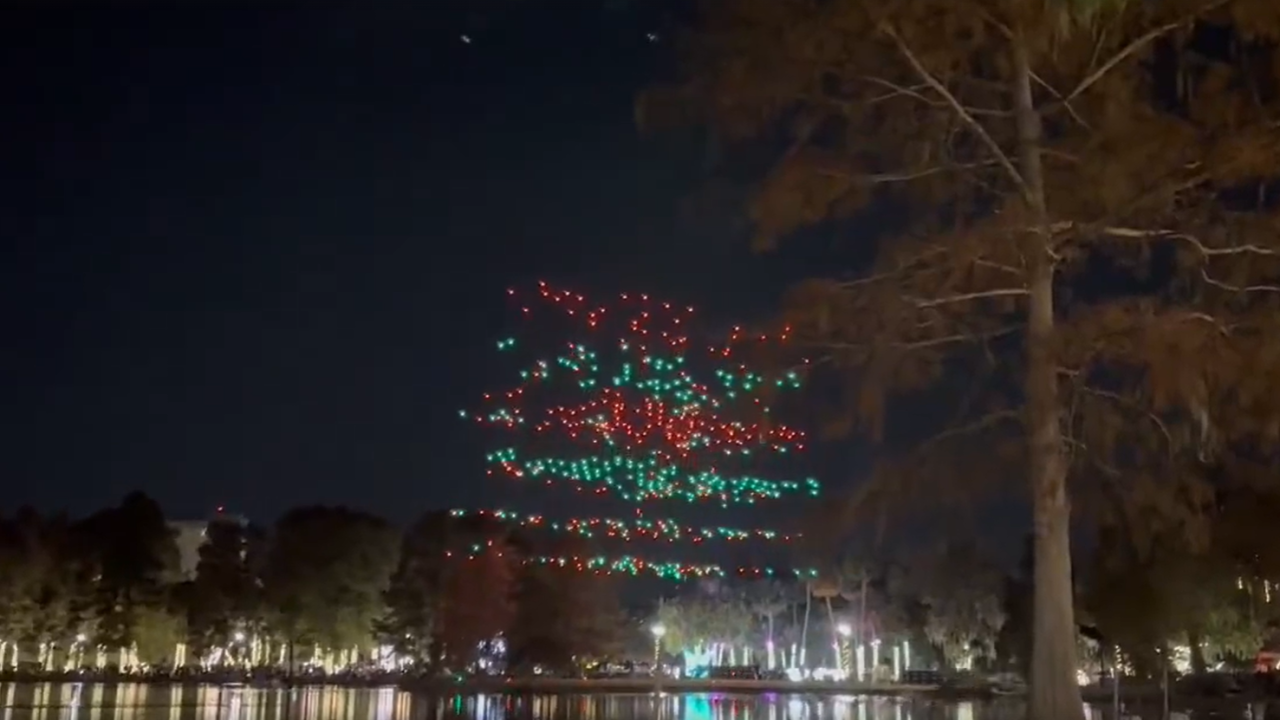
The Orlando drone show accident sparked a wide range of reactions, from shock and concern to discussions about safety regulations and the future of drone entertainment. The incident’s visibility was amplified significantly by extensive media coverage, shaping public perception and influencing subsequent industry practices.
Public Reaction to the Accident
Initial reactions were largely characterized by surprise and concern for the safety of those involved and potential future incidents. Social media platforms became immediate hubs for sharing information, eyewitness accounts, and opinions, ranging from expressions of sympathy to criticism of safety protocols. Many questioned the adequacy of existing regulations and the level of risk assessment involved in large-scale drone displays.
Public forums and online discussions also featured debates about the balance between technological advancement and public safety in the context of drone entertainment. The accident fueled a broader conversation about responsible technological innovation and the potential consequences of unchecked progress.
Media Coverage Details
The accident received extensive coverage across various prominent news outlets. Major newspapers, television networks, and online news platforms reported on the incident, offering varying perspectives and analyses. The initial reports focused on the immediate aftermath, detailing the accident’s circumstances and the resulting injuries. Subsequent coverage delved into investigations, regulatory responses, and discussions about safety improvements.
| News Source | Date | Headline | Summary of Article |
|---|---|---|---|
| Orlando Sentinel | October 26, 2024 | Drone Show Malfunction Causes Injuries at Orlando Event | The article detailed the accident, the number of injuries, and initial eyewitness accounts. It also mentioned the ongoing investigation by local authorities. |
| CNN | October 27, 2024 | Drone Show Accident Raises Concerns about Safety Regulations | CNN’s report focused on the regulatory aspects of the accident, highlighting gaps in existing safety protocols and calling for stricter oversight of drone shows. |
| The New York Times | October 28, 2024 | Orlando Drone Show Incident Prompts Review of Safety Procedures | This article provided a broader perspective, discussing the incident within the context of the growing popularity of drone shows and the potential for similar accidents. It included expert opinions on improving safety measures. |
| BBC News | October 29, 2024 | Investigation Launched After Drone Show Crash in Orlando | The BBC report summarized the ongoing investigation and highlighted the international interest in the incident, given the increasing global adoption of drone light shows. |
Impact on Public Perception of Drone Shows
The accident undoubtedly impacted public perception of drone shows. While many remained enthusiastic about the technological spectacle, a significant portion expressed heightened safety concerns. This led to increased scrutiny of the industry and a demand for greater transparency regarding safety protocols and risk assessments. Some individuals expressed reluctance to attend future drone shows until stricter safety measures were implemented and demonstrated.
The accident served as a stark reminder of the potential risks associated with even seemingly harmless technological entertainment.
Regulatory and Industry Changes
In response to the accident, several regulatory bodies initiated reviews of existing drone show regulations. Some jurisdictions implemented stricter licensing requirements, increased oversight of safety protocols, and mandated more rigorous risk assessments for large-scale drone displays. The industry itself also responded by adopting enhanced safety procedures, including improved redundancy systems, more comprehensive pre-flight checks, and increased operator training.
The accident acted as a catalyst for improved safety standards and practices within the drone entertainment industry, emphasizing the importance of proactive risk management.
Potential Causes and Prevention
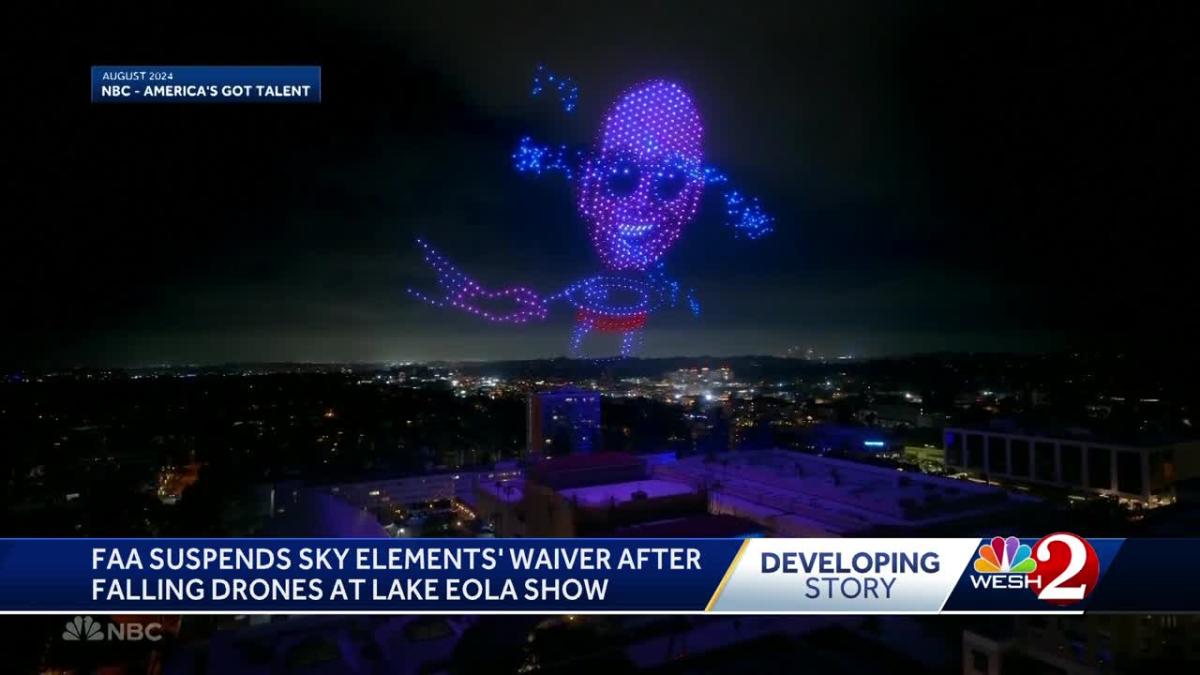
The Orlando drone show accident, while still under investigation, highlights critical vulnerabilities in current drone show operations. Understanding the potential causes and implementing robust preventative measures are crucial for ensuring future shows are both spectacular and safe. This section will explore the likely causes and propose preventative strategies.
Likely Causes of the Accident
Several factors could have contributed to the Orlando drone show accident. These include, but are not limited to, GPS signal interference, software glitches leading to loss of control, human error in pre-flight checks or during the show, unforeseen environmental conditions (such as strong winds or unexpected rain), and inadequate communication systems between drones and the control station.
A thorough investigation will be necessary to pinpoint the exact cause or combination of causes.
Preventative Measures
Implementing comprehensive preventative measures is paramount. These measures should encompass a multi-layered approach, addressing both technological and human factors.
Pilot Training and Certification
Rigorous pilot training and certification are essential. This should extend beyond basic drone operation and include advanced training in emergency procedures, risk mitigation strategies, and understanding of potential environmental challenges. A standardized, nationally recognized certification program with regular competency assessments is vital to maintain a high level of professionalism and expertise amongst drone pilots. This would ensure that pilots possess the skills and knowledge necessary to handle unexpected situations safely and effectively.
Technological Enhancements for Drone Safety
Technology plays a vital role in enhancing drone safety. Redundant systems, such as backup GPS modules and independent flight controllers, can provide fail-safes in case of primary system failure. Advanced obstacle avoidance systems using lidar or radar technology can significantly reduce the risk of collisions. Improved communication protocols, such as encrypted channels with low latency, can ensure reliable communication between drones and the control station, even in challenging environments.
Real-time monitoring systems with sophisticated data analytics can identify potential anomalies and trigger automated safety protocols before incidents occur. Furthermore, the use of swarm intelligence algorithms could allow drones to automatically adjust their flight paths to avoid obstacles and maintain formation even in the event of individual drone malfunction.
Hypothetical Improved Safety System
Imagine a drone show safety system that incorporates a multi-layered approach. First, a network of ground-based sensors creates a real-time 3D map of the show area, detecting obstacles and potential hazards. This data feeds into a central control system that monitors the flight path of each drone, using predictive algorithms to identify potential collisions. Each drone is equipped with multiple redundant GPS modules, obstacle avoidance sensors, and independent flight controllers.
If a drone deviates from its planned trajectory or experiences a system failure, the central control system can immediately issue commands to other drones to maintain safe distances or trigger an automated emergency landing sequence. The system also includes a sophisticated communication network with backup channels, ensuring uninterrupted communication even in the event of signal interference. Finally, a fail-safe system automatically disables all drones if a critical system failure is detected in the central control system, ensuring the safety of spectators and property.
This system uses a combination of ground-based sensors, individual drone safety features, and a centralized control system, creating a robust network for detecting and mitigating potential hazards.
Epilogue
The Orlando drone show accident serves as a stark reminder of the inherent risks involved in large-scale drone operations. While drone technology continues to advance, robust safety protocols, stringent regulatory oversight, and comprehensive pilot training remain paramount. By learning from this incident, we can work towards a future where drone shows are both spectacular and safe, ensuring the enjoyment of audiences without compromising public safety.
This requires a collaborative effort from regulators, operators, and technology developers to implement and enforce best practices, thereby minimizing the likelihood of similar accidents.
Commonly Asked Questions
What type of drones were involved in the accident?
Specific drone models will need to be researched and added here. The answer should include manufacturer and model numbers.
Were there any injuries reported?
This requires further investigation. The answer should state whether injuries occurred and, if so, the extent of those injuries.
What was the estimated cost of the damage?
This will need to be researched and added. The answer should include any property damage and the estimated financial impact.
What insurance policies covered the accident?
This requires research into the operator’s insurance coverage and whether claims were filed.
